Publications
The research group for Building Sustainability at BUILD (formerly SBi) at Aalborg University often publishes publications about LCAbyg and LCA on buildings in general. The purpose of developing publications about LCA is to share the knowledge from the research and inform how to model and evaluate environmental profiles for Danish buildings.
The publications are freely available and you can download them here:
Development of Danish generic LCA data
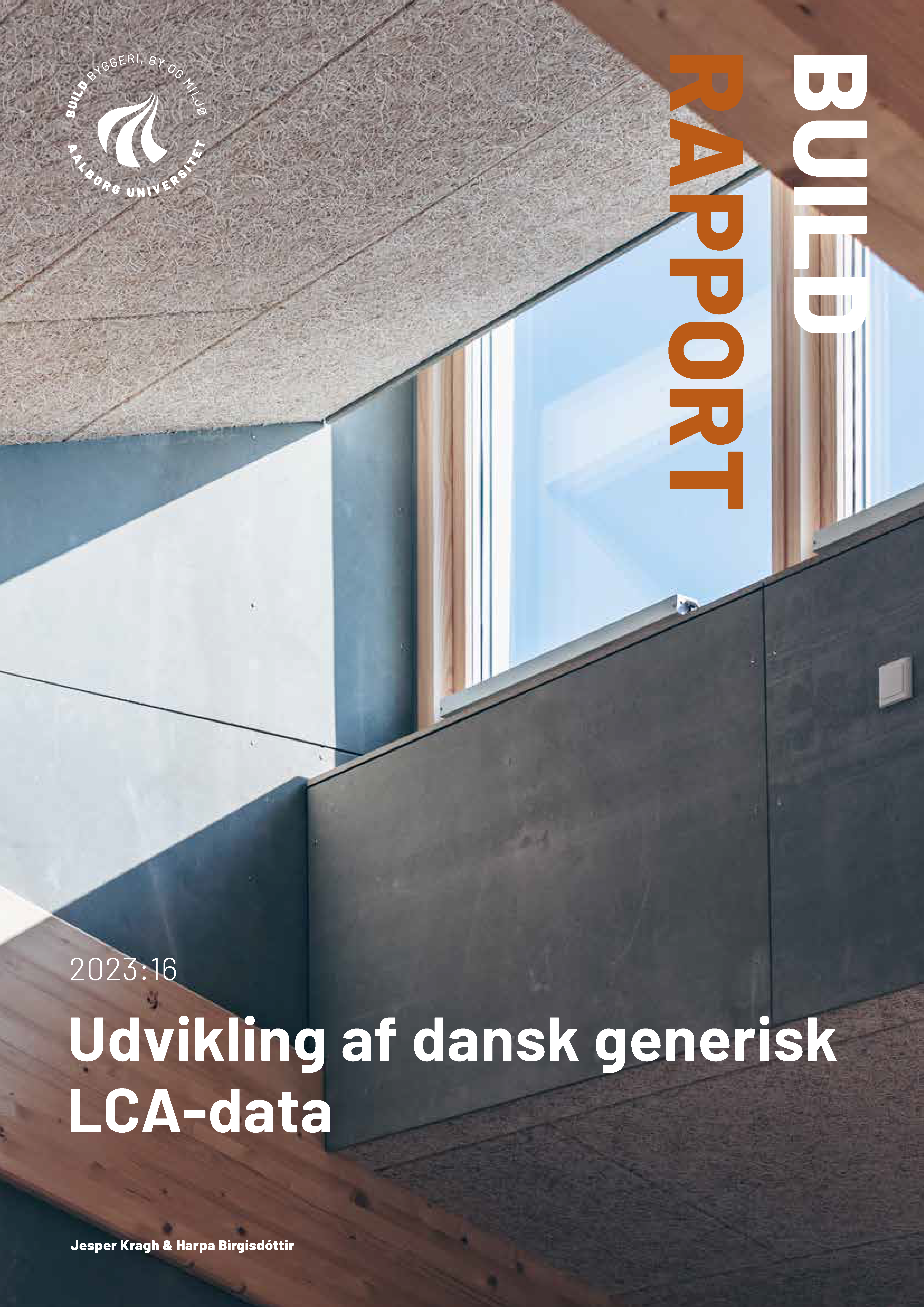
This report describes the work carried out in a public sector project by BUILD at Aalborg University for the Danish Social and Housing Authority with a view to updating the generic data material in building regulations (BR18) for the environmental impact of products for use in life cycle assessments (LCA calculations) of new construction.
Date of issue
2023-12
Authors
Jesper Kragh
Harpa Birgisdóttir
Climate impact of new constructions

This report publishes the results of the analysis carried out to prepare the political decision-making process on setting limit values for the climate impact of buildings from 2025.
BUILD - Department of the Built Environment has been tasked by the Danish Authority of Social Services and Housing (SBST) to prepare the analytical basis for the updated limit value, which is to be introduced in the building regulations in the period 2025-2027. The present report therefore first establishes a representative building database for typical new construction in Denmark, which consists of 163 typical case-buildings. These case-buildings are then used to calculate greenhouse gas emissions of the new construction in life cycle assessments and finally possible LCA-based limit values for GHG emissions for new construction are presented, ensuring that 1/3 of the new construction will have to perform better than currently.
Language
Only available in Danish
Date of issue
2023-12
Authors
Buket Tozan
Christoffer Ole Olsen
Christian Grau Sørensen
Jesper Kragh
Jørgen Rose
Søren Aggerholm
Harpa Birgisdóttir
Analysis of new modules in connection with calculation of the climate impact of buildings
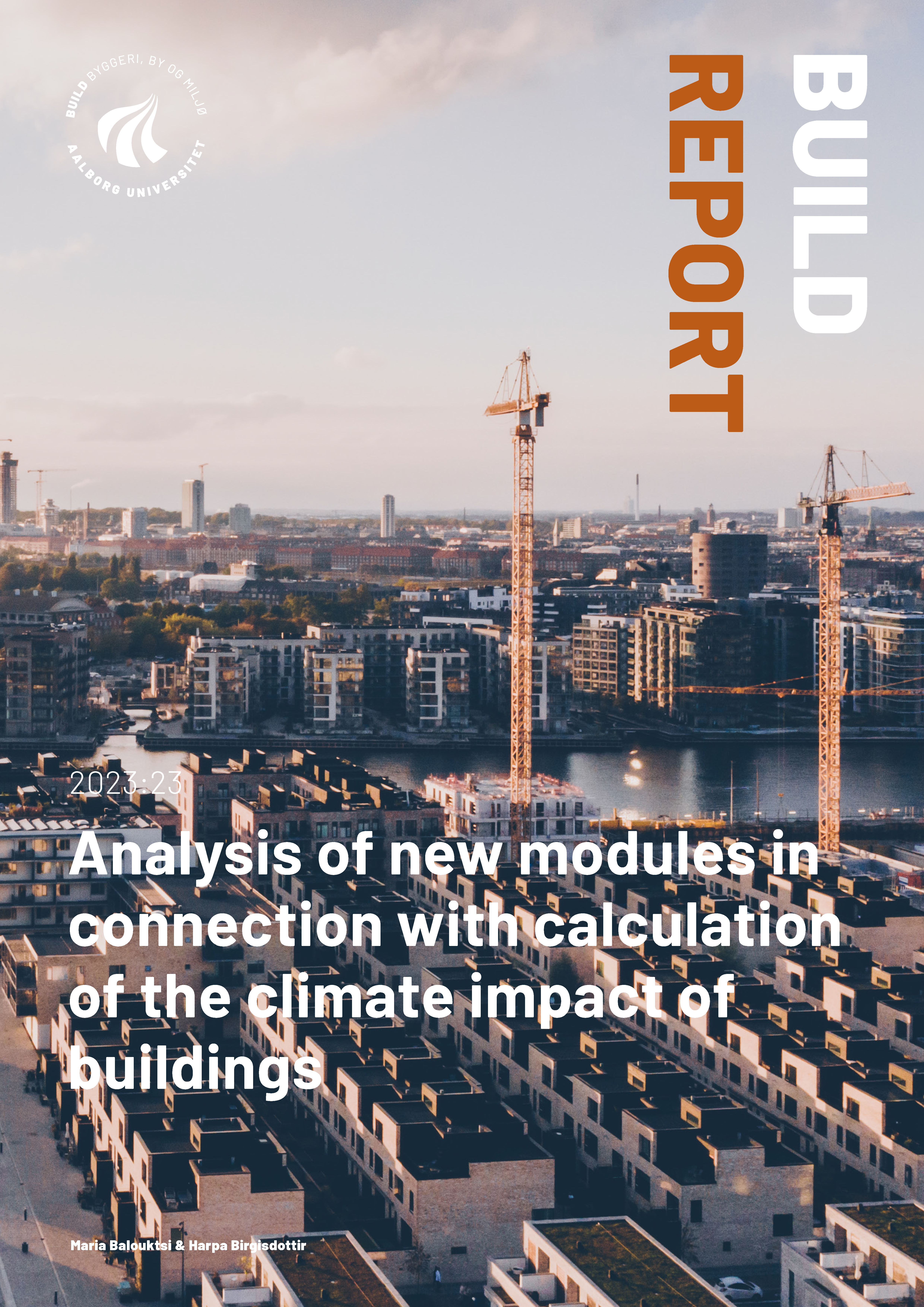
This report investigates how to define the scope of the so-far excluded modules, their relative importance to the total climate impact on the product and building level, as well as the time and effort-associated with introducing them in the climate declaration requirement.
This report examines the added impact based on the analysis of 10 building cases of different types and qualities. It studies the influence of an extended life cycle scope (A4, A5, B1, B2-3, C1, C2), as well as adjusted B4 data in line with the most recent standardization developments, on the total climate impact. The case buildings come from DGNB-certified
projects, external projects and life cycle assessments carried out by BUILD.
Language
Only available in English
Date of issue
2023-12
Authors
Maria Balouktsi
Harpa Birgisdóttir
Resource consumption on the construction site - Climate impact on the construction stage of buildings
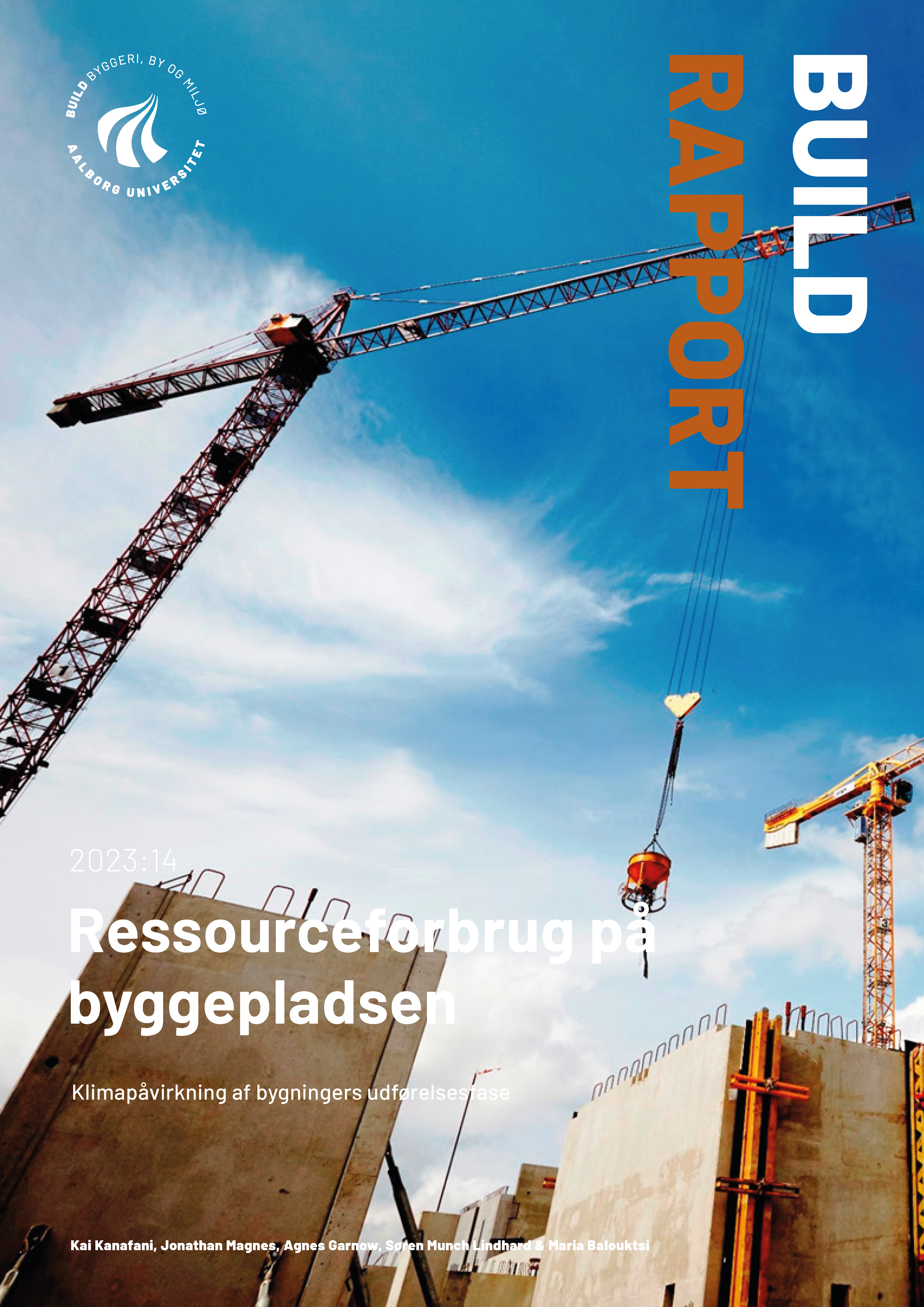
The purpose of this analysis is to map resource consumption on construction sites in connection with new construction and, on this basis, to design key figures and documentation methods that can support implementation in the building regulations' climate requirements.
The report begins with a review of the technical standards in the area, which form the basis for the climate requirements in the building regulations. As individual countries have already started to impose similar requirements in national legislation, similarities and differences in these approaches are being examined. Finally, the climate impacts of the construction process are mapped based on a number of construction sites and using other available data sources. Results are summarized in key climate impact figures.
Based on the experience that the researchers and participating companies have built up over the past years, a description of documentation requirements that can be used for reporting the climate impacts of the construction site is presented.
Based on the developed documentation requirements, the economic consequences of implementing these requirements in the building regulations are assessed. Finally, a brief overview of known optimization potentials that can reduce the climate impact of the construction site is given.
Language
Only available in Danish
Date of issue
2023-12
Authors
Kai Kanafani
Jonathan Magnes
Agnes Garnow
Søren Munch Lindhard
Maria Balouktsi
Residential buildings from 4 to 1 Planet - 25 Best Practice Cases
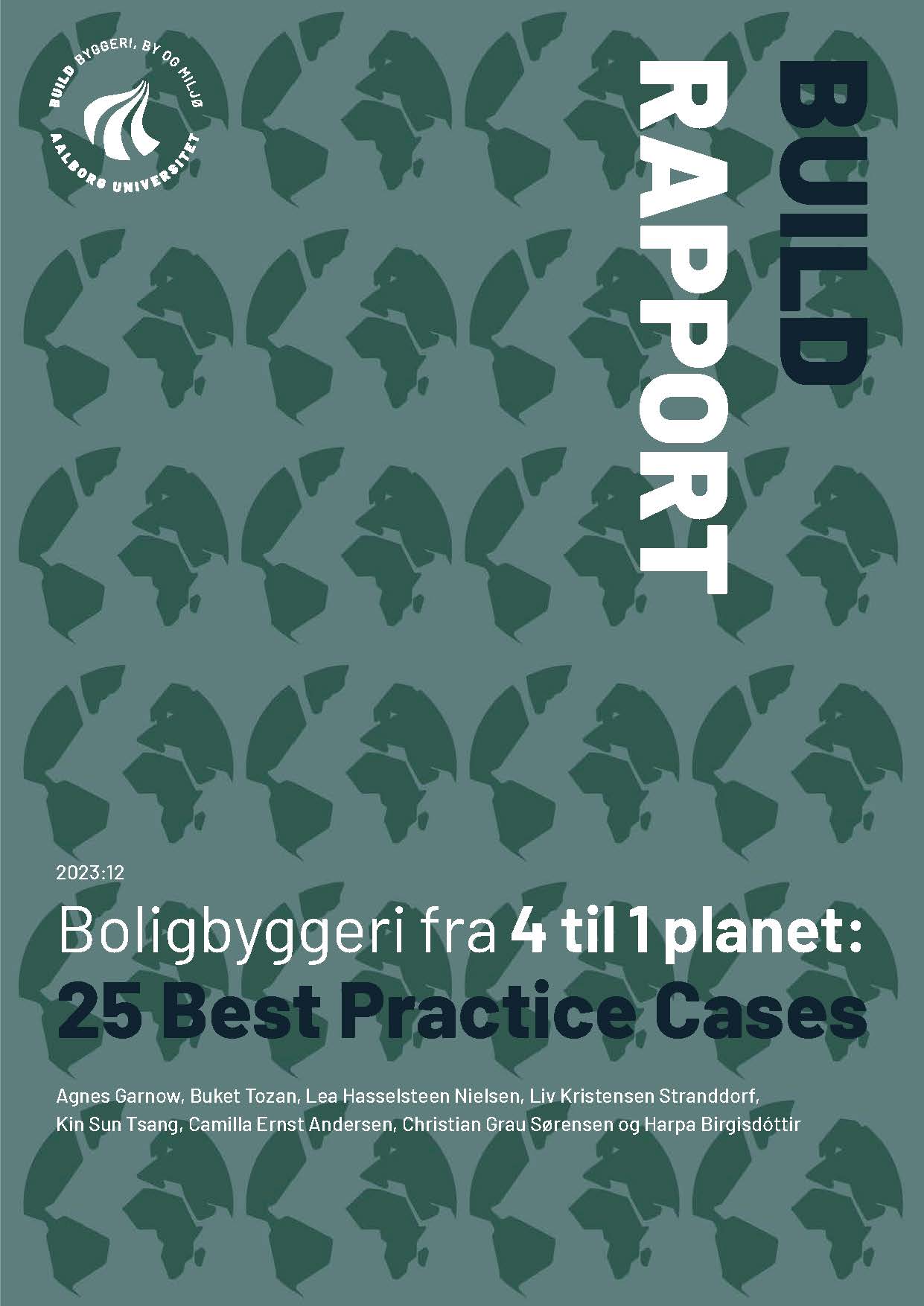
This report is part of the initiative Boligbyggeri fra 4 til 1 planets knowledge track, which collects, analyzes and disseminates the idea of existing best practice housing construction to ensure that the efforts stand on a well-founded knowledge base and make use of the best possible tools, as well as inspire and show the way for the housing construction of the future with a lower climate footprint.
As something new, this publication presents a case collection of best practice construction, which demonstrates less traditional construction practices that can result in lower climate footprint over the building's life cycle compared to conventional residential construction. The purpose of the case collection is to serve as a reference work that can inspire those who want to build residential buildings with a lower climate footprint. The case collection includes 25 residential buildings, including 7 single-family houses, 2 holiday homes, 6 townhouses, 9 apartment buildings, including 3 student homes and 1 other construction. This is a common house that is included in the case collection due to its experimental approach to new construction in e.g. concrete.
Language
Only available in Danish
Date of Issue
2023-05
Authors
Agnes Garnow
Buket Tozan
Kin Sun Tsang
Lea Hasselsteen Nielsen
Liv Kristensen Stranddorf
Kin Sun Tsang
Camilla Ernst Andersen
Christian Grau Sørensen
Harpa Birgisdóttir
Whole Life Carbon Impact of: 45 Timber Buildings
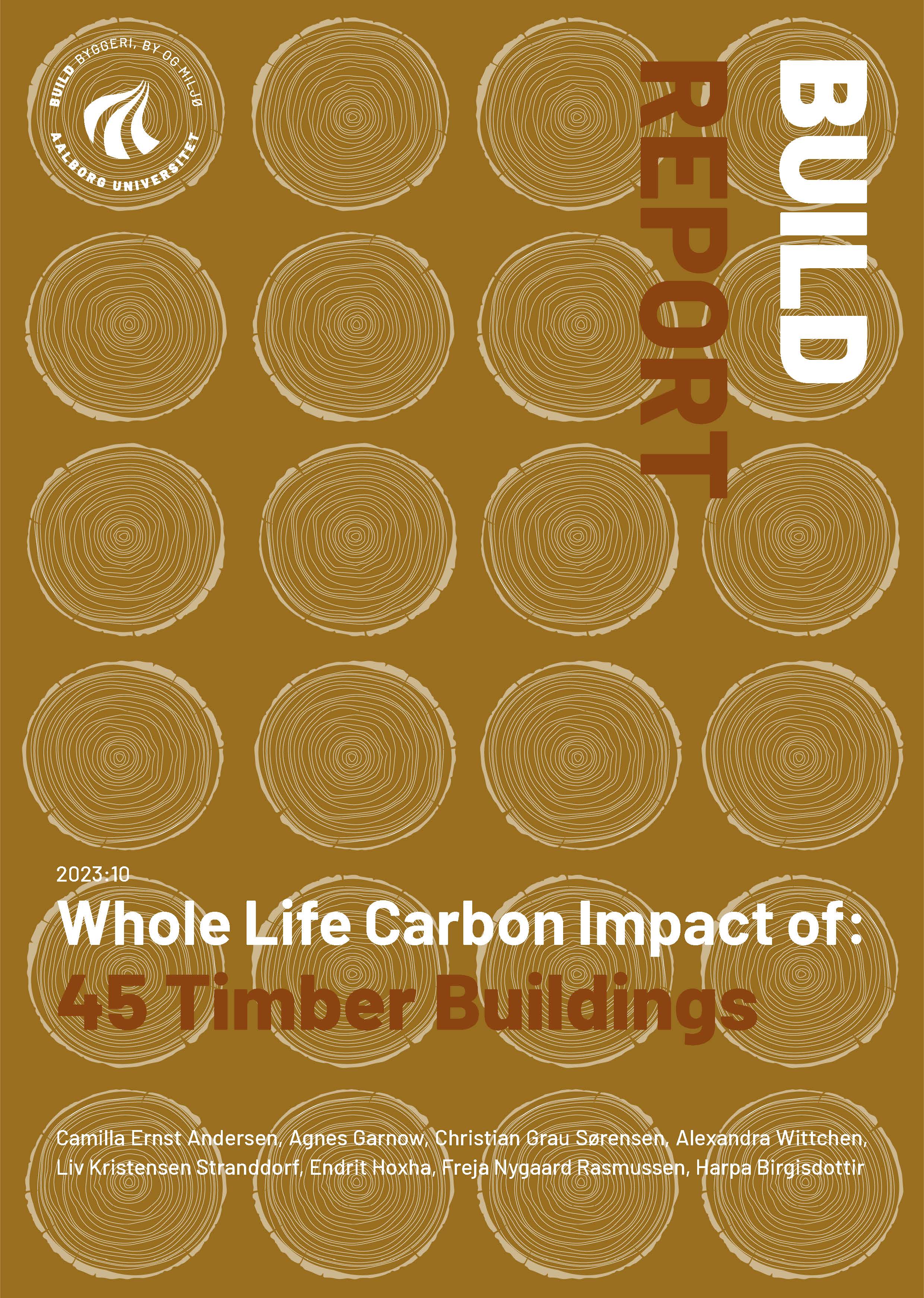
This report highlights the environmental potential of using bio-based materials in the construction industry. The report investigates the environmental impact of 45 timber buildings along with the practical challenges encountered when using timber in construction.
First, the publication presents an overview of environmental impacts from 45 timber buildings. Second, a case collection comprising 35 of these, emphasising the experiential aspects of designing and building in wood and the environmental impact produced by each building. The case collection is intended as a reference work to provide inspiration for those wishing to use timber in construction.
Date of Issue
2023-05
Authors
Camilla Ernst Andersen
Agnes Garnow
Christian Grau Sørensen
Alexandra Wittchen
Liv Kristensen Stranddorf
Endrit Hoxha
Freja Nygaard Rasmussen
Harpa Birgisdóttir
Climate impact of renovation: Options for designing limit values for LCA for renovation
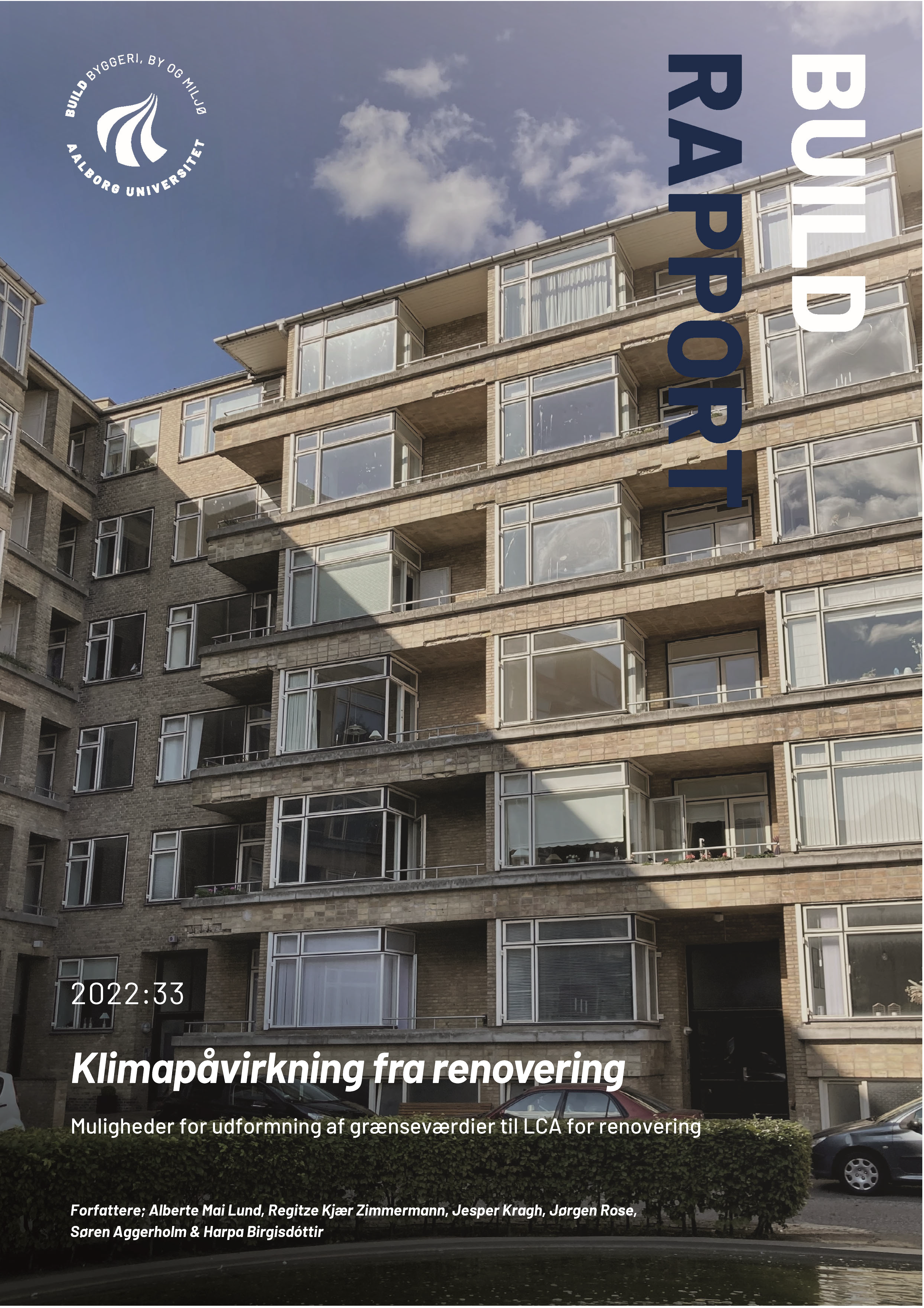
As LCA requirements can be set for renovation, the purpose of this project is to analyze the possibility of setting requirements for the climate impact of renovations, where both the requirement itself and the method must be operational and aim at a reduction of CO2 emissions. This has been done through a systematic combination of renovation types and limit values, which are exemplified through collected renovation projects.
Date of Issue
2022-09-28
Authors
Alberte Mai Lund
Regitze Kjær Zimmermann
Jesper Kragh
Jørgen Rose
Søren Aggerholm
Harpa Birgisdottir
CO2 requirements and special building requirements
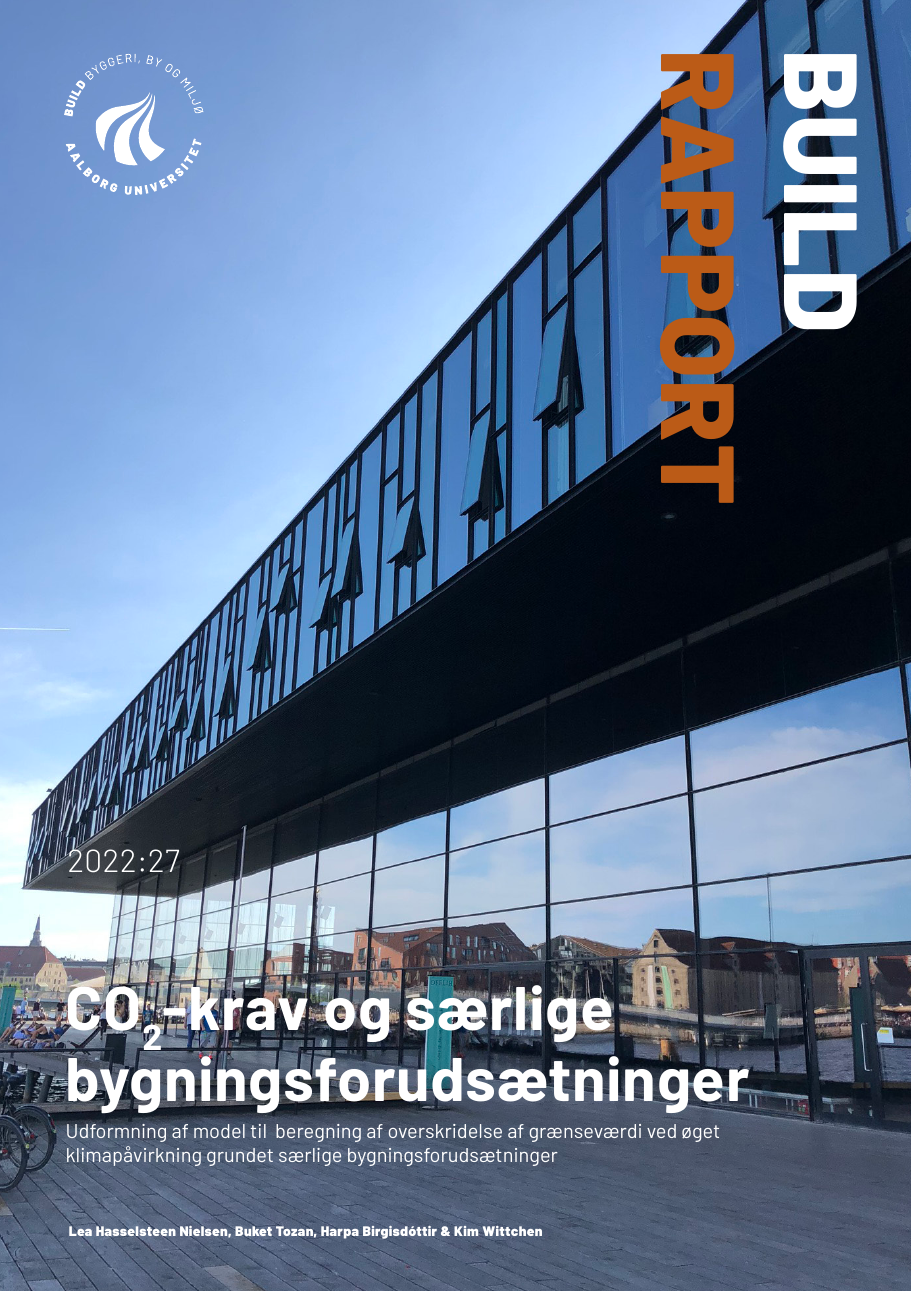
The report examines special building requirements that can lead to an exceedance of the CO2 limit value and in which cases the exceedance can be permitted. In addition, a calculation model is prepared which can determine a value for the permitted exceedance.
Date of Issue
2022-08-30
Authors
Lea Hasselsteen Nielsen
Buket Tozan,
Harpa Birgisdóttir
Kim Wittchen
BUILD service life table: Version 2021
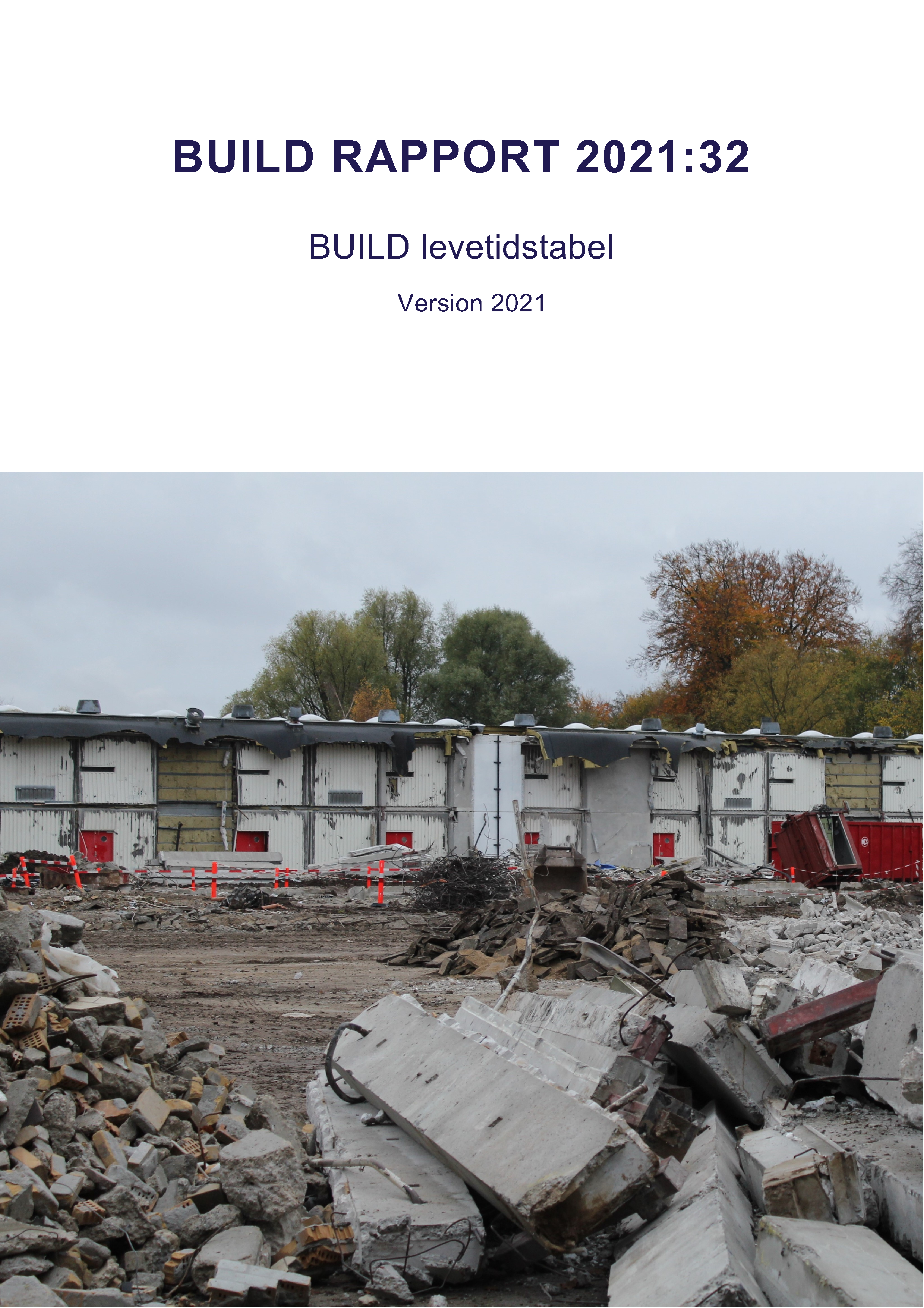
In order to strengthen the spread of LCA and LCC and create the basis for as accurate calculations as possible, it is crucial that reliable, easily accessible and widely recognized service lives are available to users of, for example, the tools LCCbyg and LCAbyg in the form of a service life table from an independent institution. The purpose of this project is to provide a new service life table that updates and expands the previous service life table from SBi2013:30. The new service life table is expanded to four different levels of detail, which can cover an increasing level of detail throughout the phases of the construction process. The four service life tables include: - Buildings corresponding to the new use codes in the BBR.
- Main groups corresponding to the main groups of the SfB system, e.g. (1) Building basis.
- Building subgroups corresponding to the SfB system groups, e.g. (10) Building base, terrain.
- Building components corresponding to the SfB system's building part index calculated according to choice of materials, e.g. (10)4 Pile foundations and well foundations.
Date of Issue
2021-12
Authors
Kim Haugbølle
Vania Mahdi
Martin Morelli
Haseebullah Wahedi
Availability and significance of EPDs
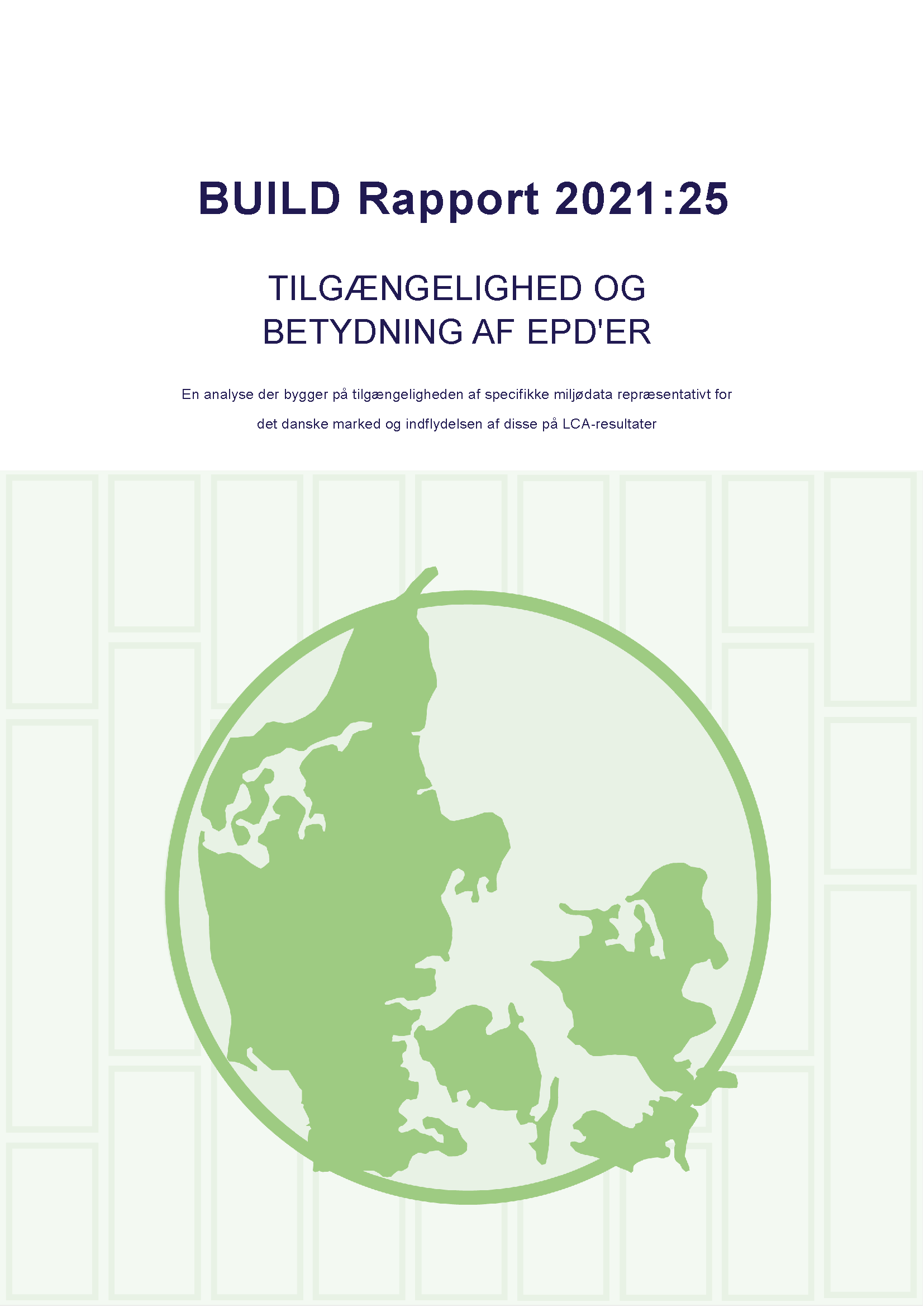
Availability and significance of EPDs
An analysis based on the availability of specific environmental data representative of the Danish market and the influence of these on LCA results
As the focus on more precise LCA results increases, there is a need to investigate how many EPDs are available and representative of Danish buildings. In addition, there is a need to investigate how LCA results change by replacing generic data from Ökobaudat 2020 with EPDs and what factors come into play.
Knowledge of, and use of, EPDs has helped to develop a more accurate data basis for life cycle assessments on Danish buildings and has also contributed to the development of CO2 limit values so that Denmark can achieve the target of 70% - reduction.
Date of Issue
2021-11
Authors
Emilie Brisson Jørgensen
Buket Tozan
Christian Grau Sørensen
Harpa Birgisdottir
Climate impact from 60 buildings
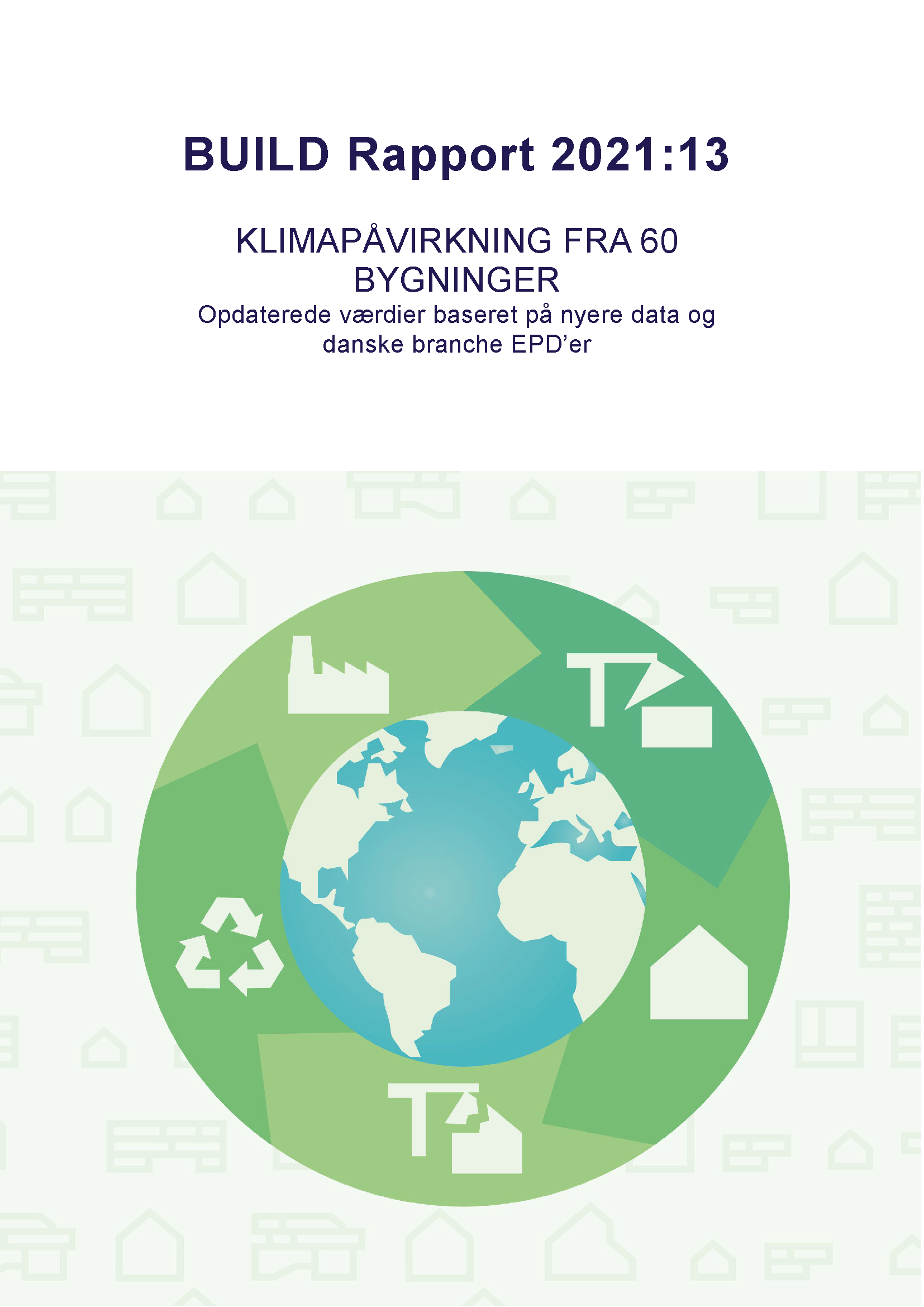
Climate impact from 60 buildings:
Updated values based on recent data and Danish
industry EPDs
Updated values based on recent data and Danish industry EPDs updated reference values that were formulated in connection with the report Climate impact from 60 buildings (SBi 2020: 04). The focus on documenting and measuring climate impacts from buildings is increasing, and several life cycle assessments of buildings are being carried out in the Danish construction industry. This development necessitates updates of data used to calculate climate impacts. In connection with the publication of LCAbyg 5, the new environmental data in Ökobaudat 2020, and Danish industry EPDs, this report updates the established reference values as the reference values are calculated in LCAbyg 5 using new environmental data.
Date of Issue
2021-04
Authors
Buket Tozan
Emilie Brisson Jørgensen
Harpa Birgisdottir
Example library for LCAbyg 2023
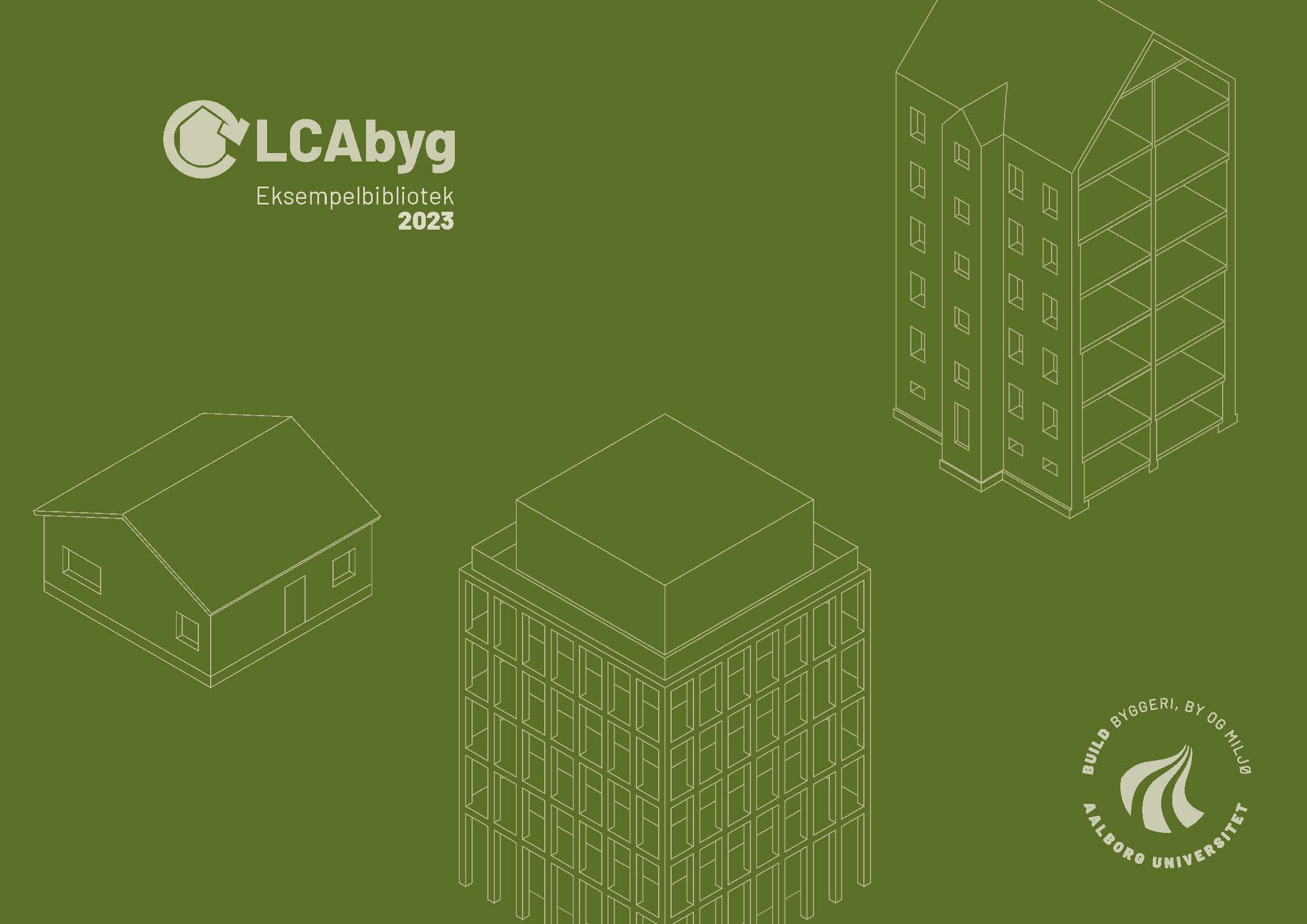
Example library for LCAbyg 2023
This publication documents the library of building components integrated into LCAbyg 2023.
LCAbyg is a Danish tool for lifecycle assessment (LCA) and calculating climate impacts on buildings. You can download the program for free at www.lcabyg.dk, where there is more knowledge about the tool and LCA, guides, and news. To learn more about using LCAbyg, see the program's user guide.
The publication presents all generic constructions in the LCAbyg library, which can be used to model new buildings, existing buildings, and renovations. The title and description of the structures correspond to how they are shown in the calculation program so that you can easily use the publication when working in LCAbyg. The climate impact for constructions for new buildings and renovations is also stated. As a user of LCAbyg, you get a quick overview of the library's content, which can help you find the desired constructions for modeling projects. In addition, it helps to decide which generic solutions are appropriate in the specific project and which solutions you want to adapt or develop yourself. Finally, you can use the publication as teaching material and for further training in the climate impact of buildings. The publication also explains the case entry, which is LCAbyg's function to generate a building model for an entire building based on a few parameters. Case entry is a time-saving way to start an LCA project. Currently, LCAbyg can generate building models for older masonry multi-storey properties, which you can use to perform LCA when renovating this type of building.
Language: This report is only available in Danish but the library in LCAbyg is available in English
Date of Issue
2023-04
Authors
Kai Kanafani
Regitze Kjær Zimmermann
Liv Kristensen Stranddorf
Agnes Garnow
Harpa Birgisdottir
Buket Tozan
Emilie Brisson Stapel
Christian Grau Sørensen
Frederikke Israelsen
Example library for LCAbyg 5.2
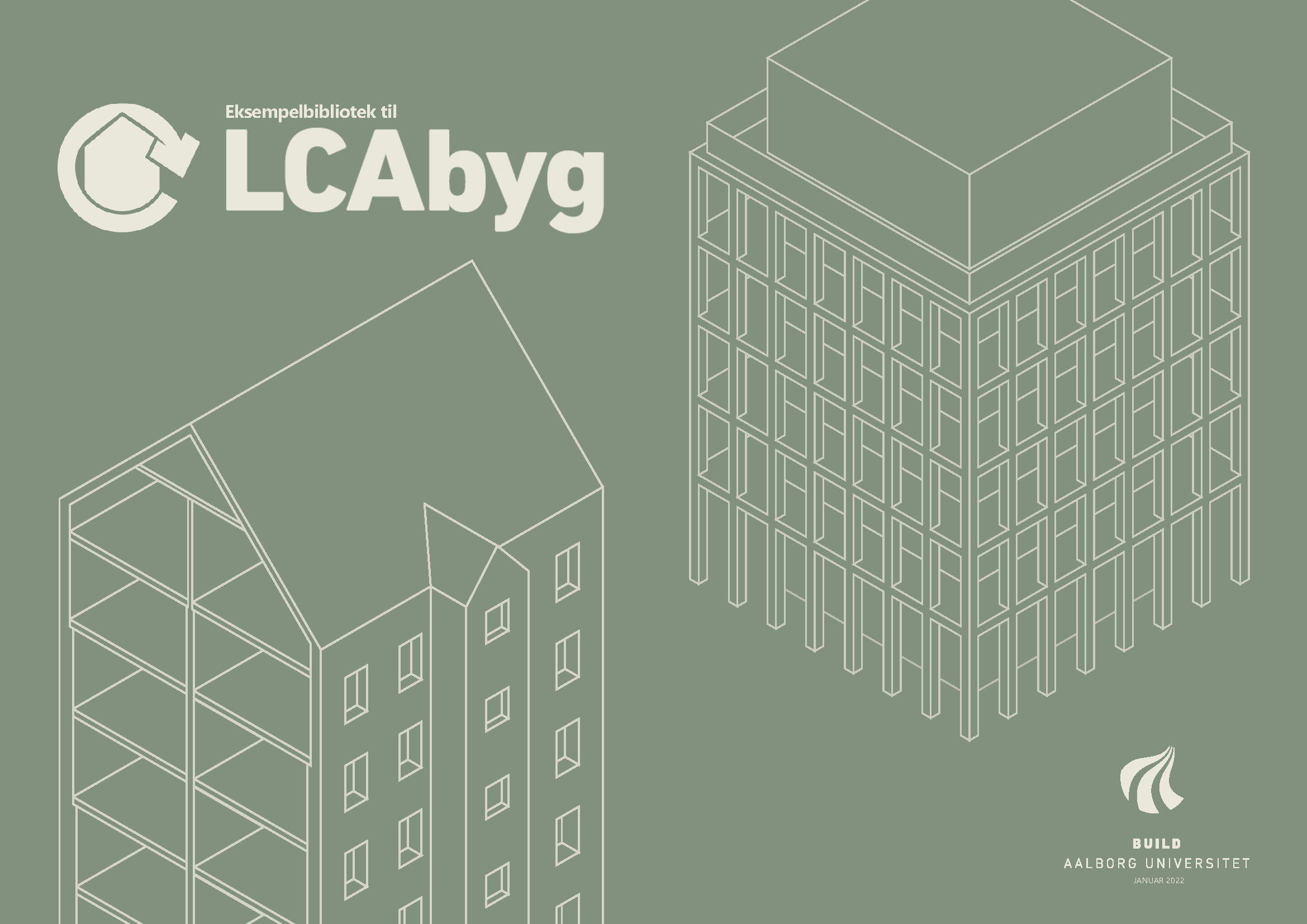
Example library for LCAbyg 5.2
This publication documents the library of building components integrated into LCAbyg 5.2.
LCAbyg is a Danish tool for lifecycle assessment (LCA) and calculating climate impacts on buildings. You can download the program for free at www.lcabyg.dk, where there is more knowledge about the tool and LCA, guides, and news. To learn more about using LCAbyg, see the program's user guide.
The publication presents all generic constructions in the LCAbyg library, which can be used to model new buildings, existing buildings, and renovations. The title and description of the structures correspond to how they are shown in the calculation program so that you can easily use the publication when working in LCAbyg. The climate impact for constructions for new buildings and renovations is also stated. As a user of LCAbyg, you get a quick overview of the library's content, which can help you find the desired constructions for modeling projects. In addition, it helps to decide which generic solutions are appropriate in the specific project and which solutions you want to adapt or develop yourself. Finally, you can use the publication as teaching material and for further training in the climate impact of buildings. The publication also explains the case entry, which is LCAbyg's function to generate a building model for an entire building based on a few parameters. Case entry is a time-saving way to start an LCA project. Currently, LCAbyg can generate building models for older masonry multi-storey properties, which you can use to perform LCA when renovating this type of building.
Language: Only available in Danish
Date of Issue
2022-01
Authors
Kai Kanafani
Regitze Kjær Zimmermann
Liv Kristensen Stranddorf
Agnes Garnow
Harpa Birgisdottir
Climate impact from 20 wooden buildings
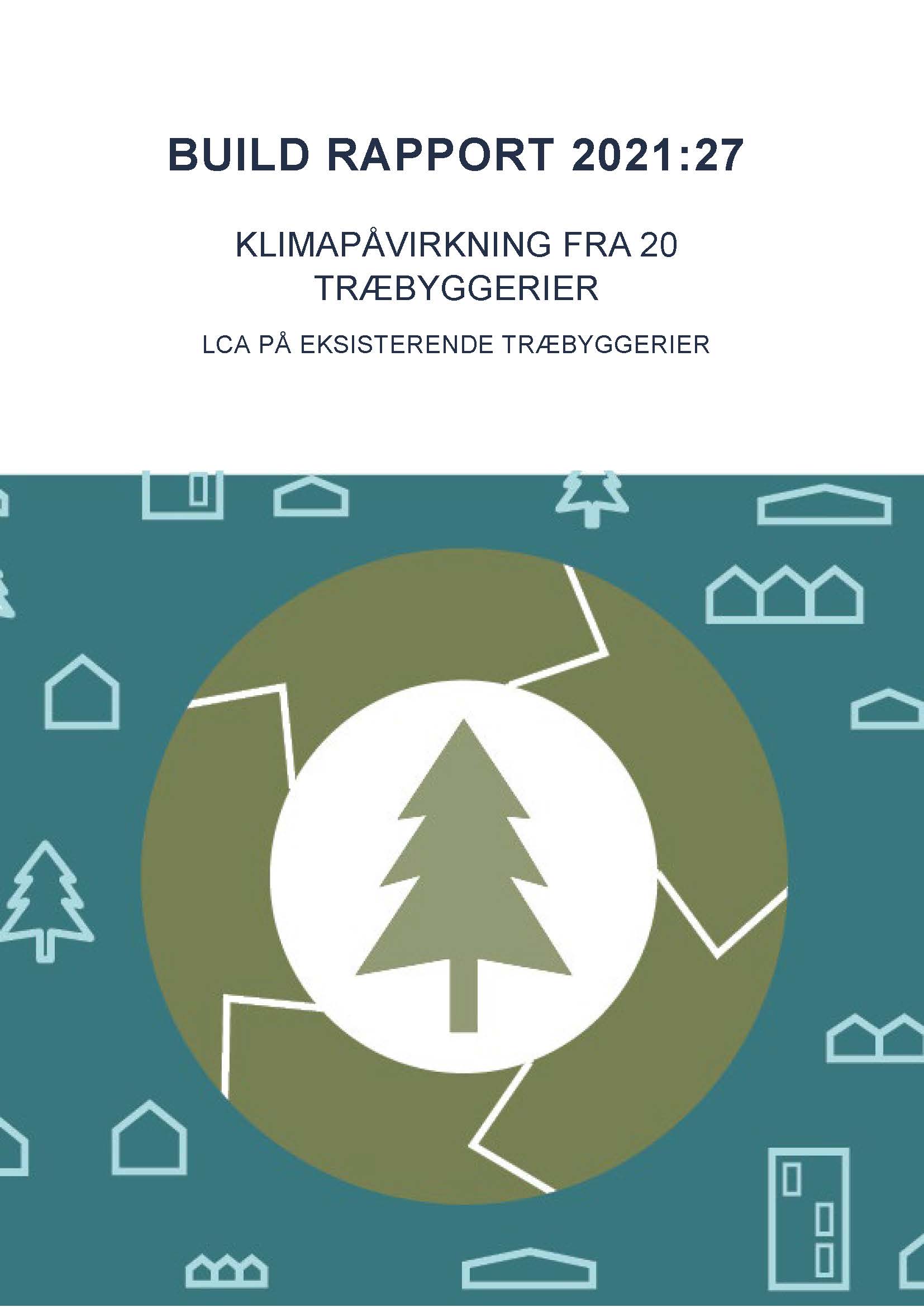
In today's society, key issues are sustainability and reducing the global climate footprint. There is an increasing focus on reducing the climate impact from materials used in construction as a supplement to reducing the operating energy from the buildings. In this context, the focus is mainly on the potential of wood and other bio-based building materials to reduce the climate impact of buildings. This is due to the tree's ability to store carbon during growth until it decomposes at the end of its life.
Date of Issue
2021-11
Authors
Alexandra Wittchen
Camilla Marlene Ernst Andersen
Harpa Birgisdottir
Freja Nygaard Rasmussen
Liv Kristensen Stranddorf
Experiences from 20 wooden buildings
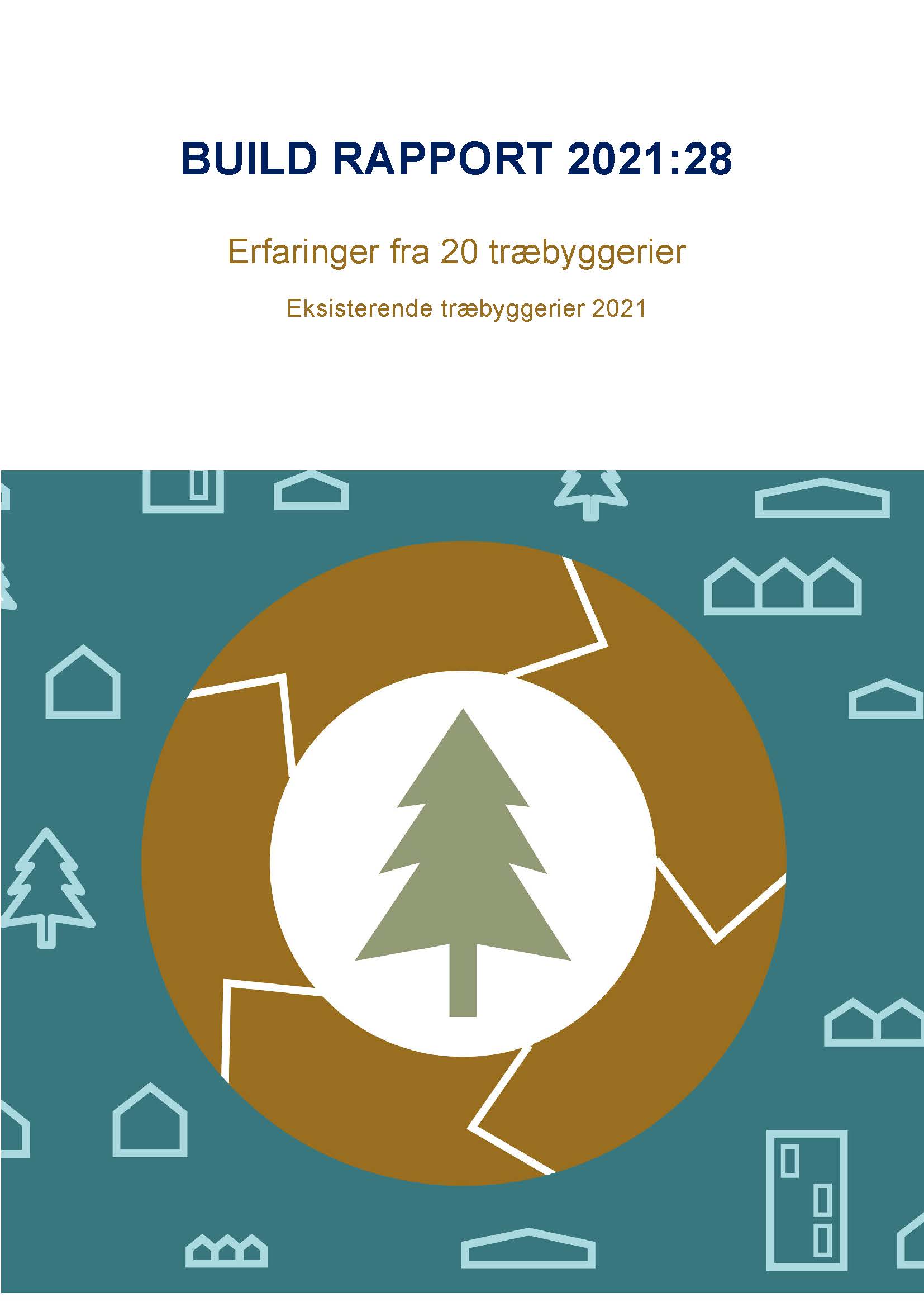
Existing wooden buildings 2021
Sustainability and focus on reducing the global climate footprint are critical issues in today's society. There is an increasing focus on reducing the climate impact from materials used in construction as a supplement to reducing the operating energy from the buildings. In this context, the focus is mainly on the potential of wood and other bio-based building materials to reduce the climate impact of buildings. This is due to the tree's ability to store carbon during growth until it decomposes at the end of its life. The report 'Climate impact from wooden buildings - LCA on 20 existing wooden buildings' confirms that it can be an advantage for the climate to build in wood, but that the building as a whole must be taken into account.
Date of Issue
2021-17-10
Authors
Alexandra Wittchen
Torben Valdbjørn Rasmussen
Climate-efficient renovation

Climate-efficient renovation:
Break-even between material use and energy savings in renovations
In recent years, the LCA method has been established as a cornerstone for assessing the sustainability of buildings. The construction industry now has the opportunity to calculate the climate impacts of buildings over their entire life cycle, which is a prerequisite for determining and reducing the overall climate footprint of buildings.
However, the existing building stock has the most significant potential to reduce the climate footprint of construction. LCA can be used to ensure that energy renovations reduce greenhouse gas emissions in the best possible way. Therefore, this report should focus on the climate efficiency of renovations by illuminating the balance between energy savings and climate impacts associated with the materials used to affect these savings. Net impacts are calculated for the renovation measures; post-insulation, window replacement, and installation of solar cells.
The construction industry's parties within building insulation, windows, and photovoltaic systems have contributed to the project with helpful input and discussions in the form of ongoing dialogue and several industry meetings.
Date of Issue
2021-13-10
Authors
Kai Kanafani
Alberte Mai Lund
Amdi Schjødt Worm
Johannes Due Jensen
Harpa Birgisdóttir
Jørgen Rose
Climate Impact from 60 buildings
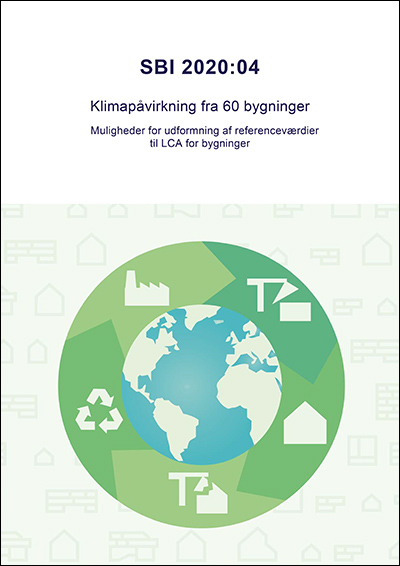
Climate Impact from 60 buildings:
Possibilities for designing reference values for LCA for buildings.
In the report Climate impact from 60 buildings - possibilities for designing reference values for LCA for buildings, the largest number of building cases collected in Denmark so far is assessed concerning their impact on the climate. As part of reducing global greenhouse gas emissions, there has been a strong focus on reducing the climate footprint of buildings in recent years. This includes the life cycle assessment (LCA) as a key tool for documenting the climate footprint of buildings taking into account the production and disposal of building materials and energy consumption during the operational phase. In this report, LCAs have been collected and prepared for 60 Danish building cases within single-family houses, terraced houses, multi-storey dwellings, offices, and other building types. Based on these 60 building cases, it was possible to establish knowledge about the climate impact of such building typologies. In addition, reference values are being developed for the climate footprint of buildings that can be used as benchmarks for future constructions. The report shows a clear potential for the construction industry to transition into emitting a lower climate footprint and meeting sustainable development in society.
Date of Issue
2020-03-15
Authors
Regitze Kjær Zimmermann
Camilla Ernst Andersen
Kai Kanafani
Harpa Birgisdóttir
LCA in early building design
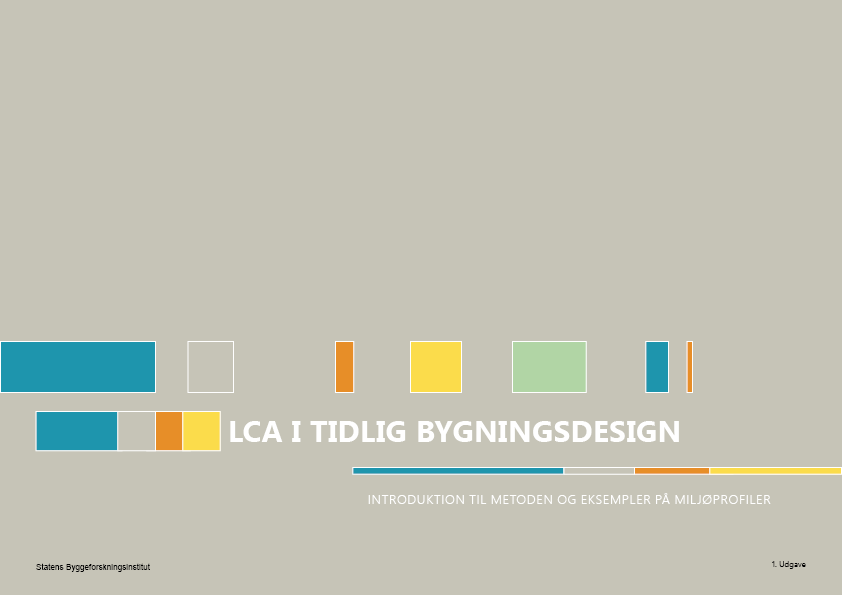
LCA in early building design:
Assessed for the entire life cycle of the building
This report assesses environmental impacts and resource consumption resulting from the manufacture, transportation, disposal, and recycling of building materials. The life cycle analysis of building materials is compared with environmental impacts and resource consumption due to the energy consumption for the operation of buildings, i.e., space heating, etc. This comparison is interesting because the current public regulation of buildings' energy consumption only covers the operating energy, while the energy consumption and the environmental impacts embedded in the building materials are not regulated in the Building Regulations or other public regulations. The report's calculations show that for new buildings, the building materials' embedded energy consumption and environmental impacts are more significant than the load from the buildings' operating energy consumption. Thus, there may be substantial potential in any public regulation to promote the sustainability of building materials.
Date of Issue
2019
Authors
Kai Kanafani
Regitze Kjær Zimmermann
Harpa Birgisdottir
Freja Nygaard Rasm
The embodied energy and environmental impact of buildings
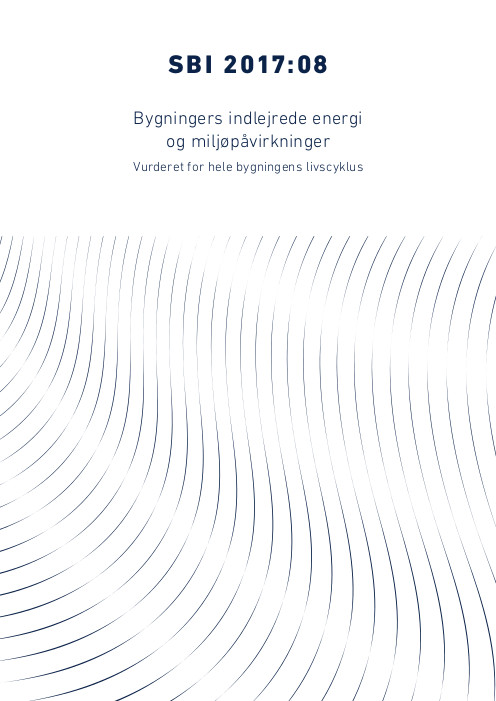
The built-in energy and environmental impact of buildings
Assessed for the entire life cycle of the building
For many years, there has been a strong focus on the operation of buildings' energy consumption, not least through more strict legislations of building regulations. After recent years' energy consumption reduction, the interest in the embedded environmental effects is increasing. The purpose of this publication is to provide developers and advisors with knowledge and tools to reduce environmental impacts related to the environmental footprint of building materials over the entire life cycle of the building. The ambition is to make life cycle assessments available to an even wider circle of professionals and builders, to reduce the environmental impact caused by the construction sector. The publication was developed with the PSO project 349-051 'Low-energy buildings and energy embedded in a sustainability perspective: new knowledge & tools for advisors and developers'. The National Building Research Institute carried out the project together with the project partners Bygherreforeningen, Arkitektforeningen, Konstruktørforeningen and IDA Byg. The project partners have contributed to the further development of the tool LCAbyg and the development of this publication with their participation in several workshops and courses.
Date of Issue
2017-06-06
Authors
Harpa Birgisdóttir
Sussie Stenholt Madsen
Guidance for the industry in LCA for renovation projects
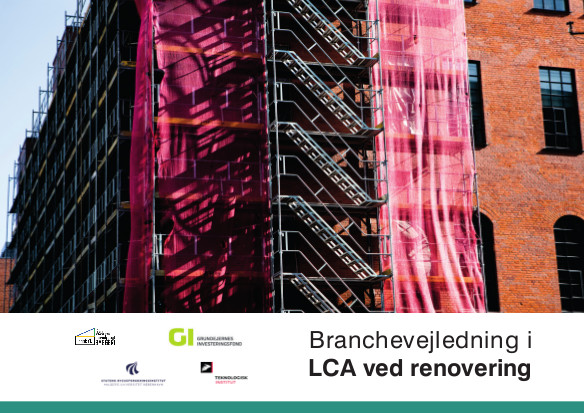
Guidance for the industry in LCA for renovation projects
This guide was developed with support from the InnoBYG project scheme via the Danish Agency for Research and Innovation and the Landowners' Investment Foundation (Grundejernes Investeringsfond).
The intended target group of the guidance is developers and consultants who offer renovation projects and subsequently perform LCA on the tendered projects.
The guide aims to create general guidelines for LCA (life cycle assessment) on building renovations, focusing on ensuring sufficiently elaborated requirement specifications within the area to maximize the consistency of the performed LCA calculations across the building sector. Thereby, LCAs can be used more often as a decision parameter when assessing the environmental conditions of building renovations.
The guidance was created in collaboration between the Danish Technological Institute (project manager and project applicant) and the National Building Research Institute (Statens Byggeforskningsinstitut, SBi).
Date of Issue
2017-01-01
Authors
Amdi Schødt Worm
Henrik Poulin
Flemming Carøe Østergaard
Harpa Birgisdottir
Freja Nygaard Rasmussen
Sussie Stenholt Madsen
Life cycle assessment of extensive building renovations
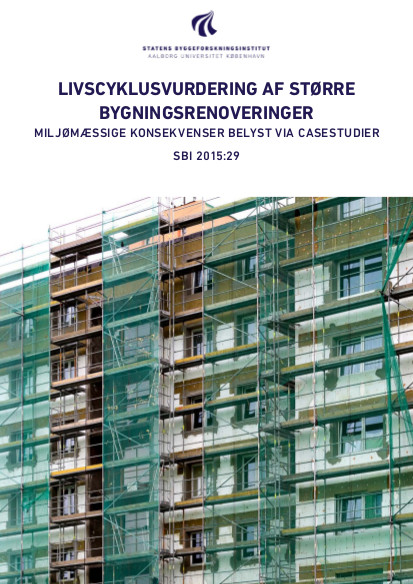
Life cycle assessment of extensive building renovations: Environmental consequences enlighted by case studies
The construction work on the existing housing stock constitutes a large share of the industry's total economic activity. It is thus an important focus area for environmentally sustainable development of the construction industry. This report clarifies essential concepts and methods related to Life Cycle Assessment (LCA) of extensive renovation works. Based on several cases, the material flows involved are characterized. The environmental impacts of the renovation intervention are determined using LCA and compared with the environmental impacts of new construction. The report shows that renovation projects may be environmentally beneficial compared to the average of new buildings.
Date of Issue
2015-12-18
Authors
Freja Nygaard Rasmussen
Harpa Birgisdottir
The life cycle of a building
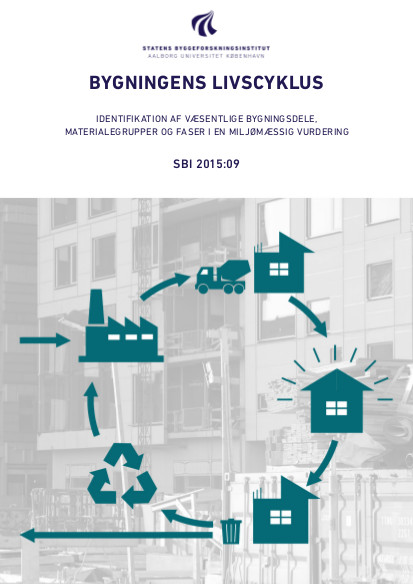
The life cycle of the building: Identification of significant building parts, material groups, and phases in an environmental assessment
There is increasing use of life cycle assessments to map the environmental sustainability of the entire lifetime of buildings. This report uses the method to analyze several variants of the most common building components and to analyze examples of typical Danish residential houses and office buildings with different energy consumptions.
With this, the actors in the building sector get an updated knowledge basis for assessing the importance of different building products and components for a building's total environmental impact and resource consumption.
Date of Issue
2015-04-13
Authors
Freja Nygaard Rasmussen
Harpa Birgisdottir
Introduction to LCA on buildings

There is increasing use in The Life Cycle Assessment (LCA) method to assess potential environmental impacts and resource consumption for products and services. The use of LCA is already increasing in the building industry, where LCA is an essential part of evaluating the environmental sustainability of buildings. The life cycle thinking shifts the focus from the conditions about the finished building to include the entire life cycle.
Date of Issue
2015-04-04
Authors
Harpa Birgisdottir
Freja Nygaard Rasmussen
The lifetime of building components by assessing sustainability and life cycle cost
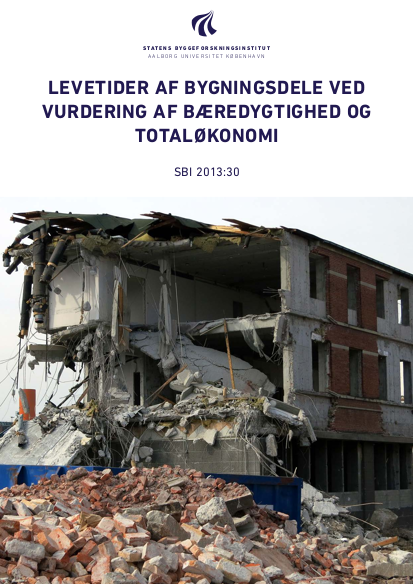
This report aims to evaluate the average lifetime of building components relevant when assessing the environmental sustainability of buildings.
There are no national or international standard listing values for the service life of building components. The amount of knowledge collected from existing and past building components is also limited. Therefore, the purpose of this report is to assess the average lifespan of building components as it proves to be relevant when evaluating the sustainability of buildings. The assessment is impartial and carried out on a professional basis. The estimated lifetimes can be used when calculating maintenance and the total economy when categorizing the sustainability of buildings.
There has been performed further development of a method and assessment of lifetimes of building components covered by "ejerskifteforsikring" (insurance against the defects in the property) and "huseftersynsordningen" (the home inspection scheme (SBi 2012: 05).
Date of Issue
2013-01-01
Authors
Niels-Jørgen Aagaard
Erik Brandt
Søren Aggerholm
Kim Haugbølle